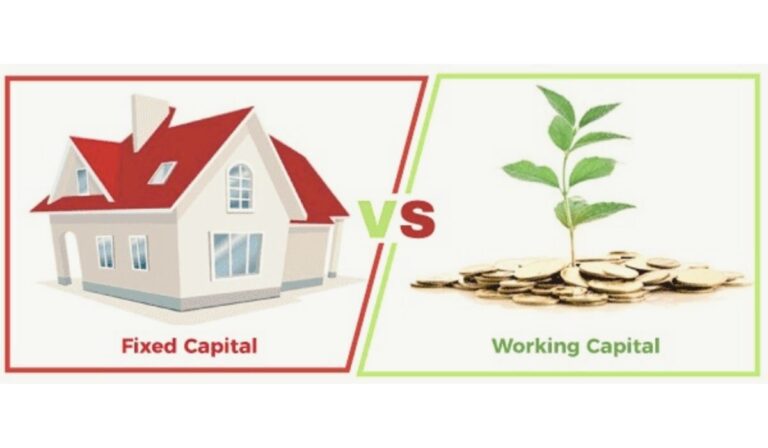The tax imposed on gains obtained from the sale of a capital asset held for a brief period of time is known as the Short-Term Capital Gains (STCG) Tax. In India, the gain from the sale of an asset is classified as a short-term capital gain and is subject to the appropriate taxation if it is sold within a certain time frame from the date of acquisition.
- These gains are of two types: Short-term capital gains (STCG) & Long-term capital gains (LTCG), depending on the holding period of the assets.
- The assets that are sold typically within 12 months for equities and 36 months for other assets are subjected to Short-term capital gains tax (STCG Tax).
- Short-term capital gains tax (STCG Tax) plays a very crucial role in India’s taxation system as it affects businesses, investors and the overall economy.
What are Short-Term Capital Gains (STCG)?
Profits from the sale of a capital asset (such as stocks, real estate, or mutual funds) that was held for a brief time—typically less than 36 months (or less than 12 months in the case of listed shares and certain securities in India)—are known as short-term capital gains
1.Holding Period:
-
- For most assets: Less than 36 months = short term.
- For listed shares, equity mutual funds, etc.: Less than 12 months = short term.
2. Tax Rate in India (as of FY 2024-25):
-
- 15% on short-term capital gains (STCG) from listed shares and equity-oriented mutual funds (under Section 111A).
- For other assets, STCG is added to your total income and taxed as per your income tax slab.
Difference between Short-term & long-term capital assets:
| Feature | Short-term capital asset | Long-term capital asset |
| Holding Period | Held for less than 36 months (for real estate, it’s less than 24 months) | Held for more than 36 months (for real estate, it is 24 months or more) |
| Tax Rate | Increased tax rates according to the income tax slab | Reduced tax rates according to the income tax slab
|
| Purpose | Usually for quick gains or trading | Usually for long-term investments |
| Examples | Gold sold within 36 months and sold within 24 months | Land sold after 24 months, stocks held for more than 12 months |
Holding period criteria for various asset classes
| Asset classes | Short-term holding period | Long-term holding period |
| Listed Equity shares & Equity mutual funds | ≤ 12 months | ≥ 12 months |
| Debt mutual funds | ≤ 36 months | ≥ 36 months |
| Real estate (land & building) | ≤ 24 months | ≥ 24 months |
| Other capital assets (e.g., gold, bonds jewelry) | ≤ 36 months | ≥ 36 months |
Applicability of STCG Tax in India:
STCG tax is levied when the following assets are sold within a short holding period:
| Asset Type | Holding period for STCG |
| Listed equity shares & equity mutual funds | ≤ 12 months |
| Debt mutual funds, bonds, gold, property, crypto | ≤ 36 months |
Applicability: Resident & non-resident applicability
- Resident Indians: Except for equity assets
- Non-Resident Indians (NRI’s): Various tax rates apply, frequently with Tax deducted at Source (TDS). Double Taxation Avoidance Agreements (DTAA) may provide them with relief.
STCG tax treatment based on asset type
- Equity Assets: Section 111A levies a 15% STCG tax on listed equity shares and equity-oriented mutual funds (if sold within 12 months)
- Non-Equity Assets: STCG is taxed as per the individual’s income tax slab rates (e.g., gold, real estate, debt mutual funds, etc.
STCG Tax Rates:
Short-Term Capital Gains (STCG) taxes in India have changed significantly since the Union Budget 2024, as of March 27, 2025. The following are the updated tax rates.
| Asset Type | Previous STCG Tax Rate | Revised STCG Tax Rate (Effective from July 23’2024) |
| Equity shares and equity-oriented mutual funds (with Securities Transaction Tax paid) | 15 % | 20% |
| Other assets (e.g., real estate, gold, debt-oriented mutual funds) | Taxed at applicable slab rates | Taxed at applicable slab rates |
- STCG Surcharge & Cess
The following Surcharges & Cess are in addition to the basic tax rates:
Surcharges: It is an additional charge on the income tax amount, applicable as per the following income slabs:
| Total Income Range (₹) | Surcharge Rate |
| Up to 50 lakhs | NIL |
| 50 lakhs to 1 crore | 10% |
| 1 crore to 2 crore | 15% |
| 2 crore to 5 crore | 25% |
| Above 5 crore | 37% |
- Health & Education Cess:
A 4% cess on the total income tax and surcharge, These additional charges are consistent across various income types, including STCG.
How is STCG Tax Calculate
Step-by-Step Calculation of STCG Tax:
- Determine the sale price: The price at which the asset was sold.
- Determine the purchase price: The price at which the asset was bought.
- Calculate the Short-Term Capital Gain: STCG= Sale price – Purchase price – Expenses
- Apply the appropriate tax rate: 15% under section 111A for equity shares and mutual funds, other assets like gold, real estate, or etc., are subjected to individual income tax slabs
Example Calculation:
- Purchase Price: ₹50,000
- Sale Price: ₹70,000
- Short-Term Capital Gain: ₹70,000 – ₹50,000 = ₹20,000
- Tax Rate (15%): ₹20,000 × 15% = ₹3,000
- Final STCG Tax Payable: ₹3,000
Exemptions & Deductions on STCG:
- Exemption on STCG:
- Section 54F: It states that exemption is only available for LTCG, not on STCG
- STCG on shares (Section 111A): Taxed at 15% (if STT is paid), No exemption.
- Other STCG: Taxed as per slab rates (if not covered under Sec. 111A).
2. No Standard deduction:
- Unlike LTCG, there is no ₹1 lakh exemption on STCG.
- Full STCG is taxable without any standard deduction.
- No Indexation Benefits: STCG is taxed on absolute gain without accounting for inflation, in contrast to LTCG, which permits indexation.
Strategies to Save on STCG Tax:
- Hold Assets Longer: By keeping investments for longer than the allotted time, you can convert STCG to LTCG.
- Tax-Loss Harvesting: Sell investments that are losing money to offset STCG.
- Tax-Saving Mutual Funds: To receive tax advantages, invest in an equity-linked saving scheme (ELSS).
- Utilize Exemption Limits: The fundamental exemption limit is available to everyone, particularly senior citizens.
Recent Amendments/Updates:
- In the Union Budget 2024-25, several significant changes were introduced to the capital gains tax structure:
- The rate on STCG from the sale of business trusts, equity-oriented mutual funds, and listed equity shares was raised from 15% to 20%
- LTCG: All financial and non-financial assets now have an LTCG tax rate of 12.5% instead of 10%. Additionally, the exemption limit for LTCG was increased from ₹1 lakh to 1.25 lakh.
- Holding Periods: 12 months for listed financial assets and 24 months for unlisted financial assets and non-financial assets.
Conclusion:
- Understanding STCG tax rules helps in effective tax planning.
- To reduce tax obligations, use lawful tax-saving techniques.
- For compliance, always keep informed and seek advice from professionals.
FAQ Section:
1.What is short-term capital gains tax in India?
Ans. STCG is the tax on profit earned from selling assets like stocks, property, or mutual funds within a short period (usually 12 months or less).
2. How much is the STCG tax rate on shares?
Ans. STCG is subject to 15% taxation on listed shares. Share that is not disclosed are taxed according to your income slab
3.How is STCG tax calculated?
Ans. STCG tax = ( selling price-purchase price- expenses) × Applicable Tax rate
4.How can I reduce my short-term capital gains tax?
Ans. You can invest in tax-saving products, use exemptions when appropriate, or offset gains with short-term capital losses.
5.Are there any exemptions on STCG tax?
Ans. No direct exemption exists, but losses can be carried forward for up to 8 years to offset future gains.
Also Read,




